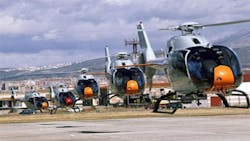Why is Industry in Querétaro, Mexico Growing so Quickly?
Wanting to better understand the reasons behind the extensive growth in the State of Querétaro, Mexico, I talked to Hugo Mandujano, director of Investment Promotion for the State of Querétaro, Mexico. He has worked both in the government sector (in investment promotion) as well as the private sector (working with manufacturers and other international companies setting up in Mexico
For someone who hasn’t been there in recently, how have the city and state of Querétaro developed over the last 10-15 years?
Mandujano: The growth of the metropolitan area of Querétaro has increased about 42% within the past 10 years. The population is now a little bit more than 1.1 million people.
Industry has grown too, increasing from 428 companies in 2003 to more than 1,300, companies by the end of 2013. That’s an increase of 208% on foreign direct investment (FDI).
Finally, the GDP of the state was $12 Billion in 2003, whereas today it has nearly doubled to $24.8 Billion.
A lot of this is thanks to a continued commitment to development and education, because the goal of the government in Querétaro is have the highest percentage of educated people in the whole country. That makes a big difference for us. Previous governors, previous administrations, probably going back two or three of administrations, helped set up goals and milestones in terms of trying to achieve competitiveness within the state. So we have made great efforts to put the proper infrastructure and support for education, in place.
How has Querétaro become such a known commodity in the aerospace industry?
Mandujano: The pursuit of more competitive education here in the region, an education focused on competencies, has been the key. That was the factor in 2006, for example, when we were asked by Bombardier to participate in the bidding of establishing a site for their manufacturing.
We used that as a driving factor to establish the National Aeronautic University of Querétaro [a higher education institution serving the need for specialized education and training for the sector]. And that commitment was basically the turning point for Bombardier. We were able to support the demands of the industry and followed what they were doing in Canada. We got support from French companies also in terms of developing a system that could work for the rise of this industry and that was the cornerstone.
When my company’s industrial park first opened in central Mexico 12 years ago, our focus was so much on cost and we had this onslaught of competition from China. Over the last three or four years, we’ve seen the manufacturers still worried about cost, obviously, but they’ve started to move away from just thinking about what labor-intensive work they can do here, to bringing in also capital-intensive operations, machine operations. How successful has Querétaro been in attracting those types of companies that have a mixture of labor-intensive and capital-intensive operations?
Mandujano: Today we still have a great challenge in terms of adapting to the requirements of every project. We have several institutions today that give us a chance to adapt the educational and technical training to the demands of the industry. And for projects that require trained people or better-educated people in certain areas, we are using programs in which [the state] pays for the training of the people for two or three months, while they complete their training either at the educational institution or at the workplace, depending on the project. But that challenge remains.
From a workforce standpoint, the location of Querétaro is very helpful. We are very close to a lot of cities, and one of the important things that we always mention is that Querétaro is the demographical center of the country. We can reach 45 million people within a 350-kilometer radius. So that is something that we take advantage of and for us is very easy to draw enough talent when more qualification is required, especially for those capital-intensive operations.
And for those operations that are more labor intensive, definitely things are changing in the metropolitan area of the city of Querétaro, because obviously the cost of labor is a little bit higher. But there are new regions within the state of Querétaro that offer the same conditions that Querétaro used to offer, say 10 years ago, so it’s a matter of finding the proper spot for the proper investment.
Note: This article is extracted from the Podcast “Flying High: How Querétaro Became a Leading Global Manufacturing Location.”
Listen to the full podcast for more, including:
- Despite the fact that costs in Querétaro are rising, inflation remains manageable by historical standards.
- Neighboring cities in the state that offer growth prospects for foreign manufacturers, with lower operating costs than those in the city of Querétaro.
- The types of foreign nationals that are flocking to the city of Querétaro, enjoying the city’s cultural richness and diversity.
- Arkansas State University’s brand new campus, situated in the heart of Querétaro, which will be the first fully American university in Mexico.
Doug Donahue is vice president of the Entrada Group a U.S.-based company that provides setup and ongoing support services for manufacturers establishing Mexican operations.
